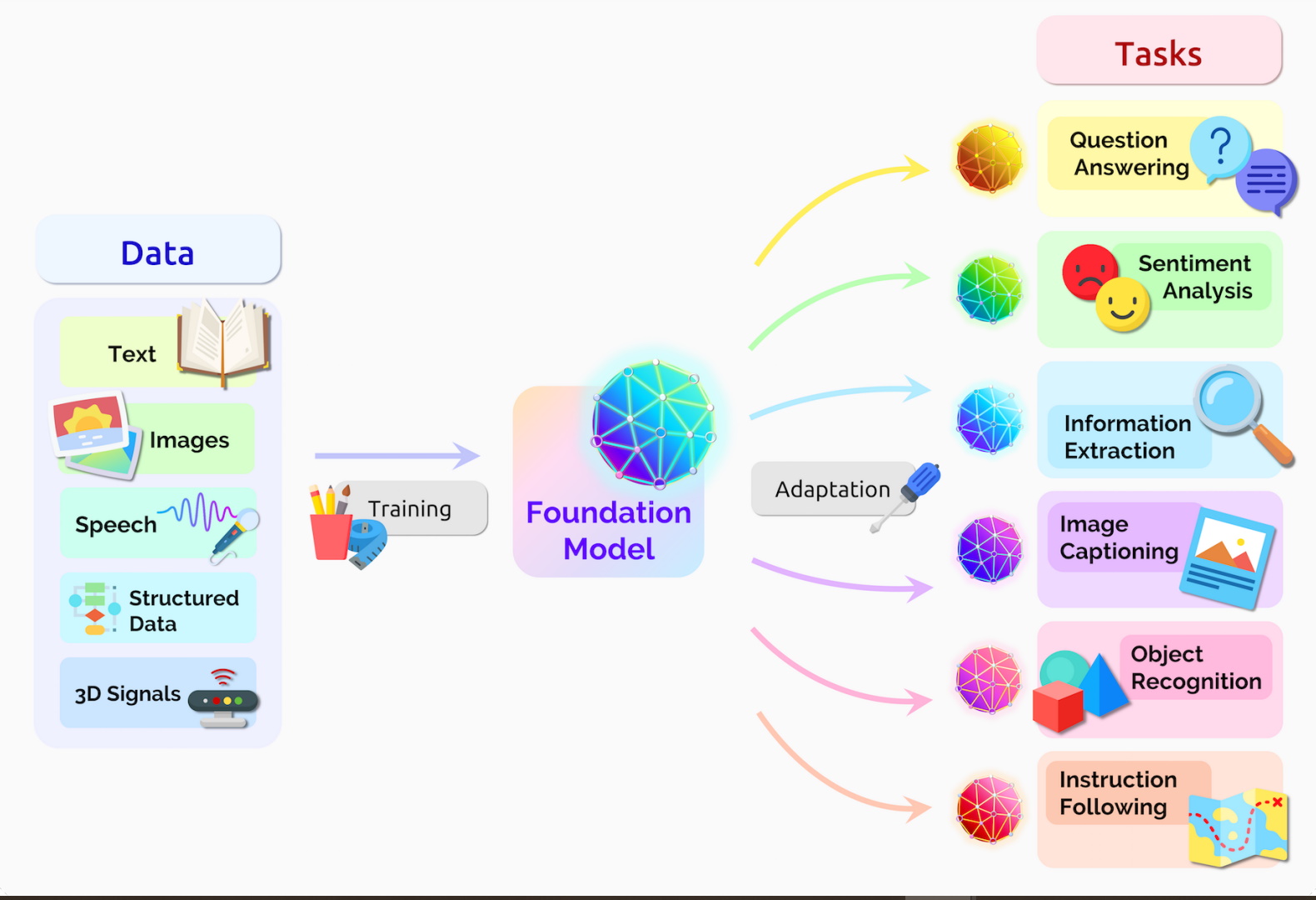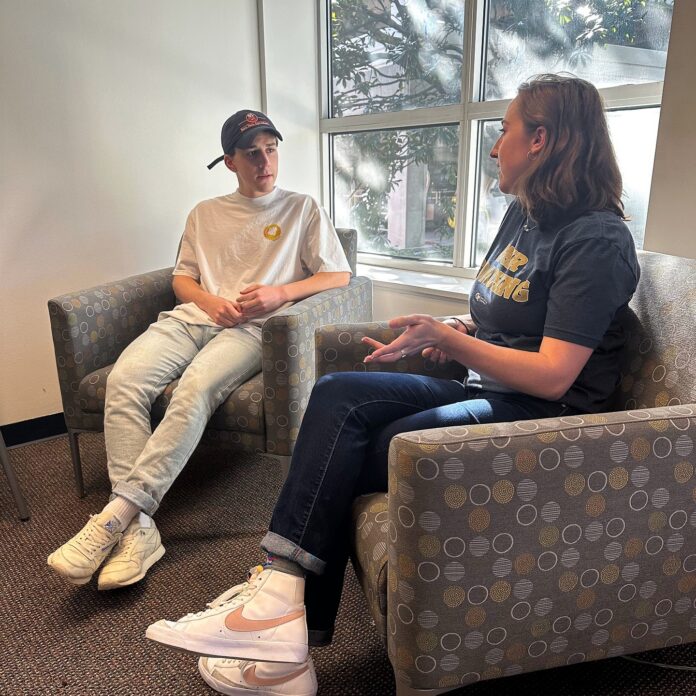The creation of language models like ChatGPT is rooted in the field of artificial intelligence and its subfield of machine learning. Specifically, ChatGPT belongs to the family of models known as transformers, which were introduced in a seminal 2017 paper by Vaswani et al. titled “Attention Is All You Need” [1].
Before we delve into transformers and attention, let’s talk about the more basic types of machine learning models: supervised and unsupervised learning.
Supervised learning involves training a model to make predictions based on labeled data. For example, you might train a model to recognize handwritten digits by giving it many examples of handwritten digits along with their correct labels (e.g., “this is a 7,” “this is a 9,” etc.). The model then learns to recognize patterns in the data that correspond to the correct labels, and can make predictions on new, unlabeled data.
Unsupervised learning, on the other hand, involves training a model to find patterns in data without explicit labels. For example, you might train a model to group similar news articles together based on their content, without telling the model which articles belong in which groups. The model would learn to identify common themes or topics across the articles and group them accordingly.
Now, let’s talk about transformers. Transformers are a type of neural network that were introduced in the aforementioned 2017 paper [1]. They’re used for a variety of natural language processing (NLP) tasks, such as language translation, text classification, and text generation.
The basic idea behind transformers is that they use “self-attention” to process input sequences. Self-attention means that the model can pay different amounts of attention to different parts of the input sequence, depending on which parts are most relevant to the task at hand [2].
To illustrate this, let’s consider an example sentence: “The cat sat on the mat.” If we wanted to use a traditional neural network to process this sentence, we might represent each word as a vector with a 1 in the position corresponding to the word, and 0s elsewhere and feed those vectors into the network one at a time.
But with a transformer, we represent each word as a vector that includes information about all the other words in the sentence. Specifically, for each word in the sentence, we compute a “query,” a “key,” and a “value” vector. The query vector is used to determine how much attention to pay to each of the key vectors, and the value vectors are combined based on those attention weights to produce a final output vector.
In the case of our example sentence, the transformer might pay a lot of attention to the word “cat,” since it’s the subject of the sentence, and less attention to the word “the,” since it’s just an article. By using self-attention in this way, the transformer can process input sequences much more efficiently than traditional neural networks, since it can focus on the most important parts of the sequence at each step.

Now, let’s talk about how ChatGPT was specifically trained. ChatGPT is based on the GPT-3 architecture, which is a highly advanced transformer model with 175 billion parameters (i.e., weights that the model has learned during training). That’s a lot of parameters – for context, the previous state-of-the-art model, GPT-2, had “only” 1.5 billion parameters.
To train a model as large and complex as GPT-3, you need a lot of data. In fact, GPT-3 was trained on a dataset of over 45 terabytes of text, which included everything from web pages to books to Wikipedia articles. This huge amount of data allowed the model to learn a vast amount of knowledge about the structure and nuances of language.
The training process for GPT-3 involves a technique called gradient descent. Essentially, the model starts with randomly initialized weights, and then makes predictions on the training data. The difference between the model’s predictions and the correct answers (known as the “loss”) is then used to adjust the weights slightly in the direction that would reduce the loss. This process is repeated many times, gradually fine-tuning the model’s weights to better fit the data.
One challenge with training models as large as GPT-3 is that it requires a lot of computational power. GPT-3 was trained using a combination of both CPU and GPU computing, and the training process took several months to complete.
So, what makes ChatGPT different from GPT-3? As I mentioned earlier, ChatGPT is a variant of the GPT-3 model that has been fine-tuned for conversational applications. This fine-tuning process involved training the model on a specific task – in this case, generating responses to user inputs in a natural-sounding way.
To fine-tune the model, the researchers behind ChatGPT used a technique called transfer learning. Transfer learning involves taking a pre-trained model (like GPT-3) and re-training it on a new, related task (like generating conversational responses). The idea is that the model has already learned a lot of useful knowledge from its pre-training, and can apply that knowledge to the new task with less additional training.
During the fine-tuning process, the researchers fed the model pairs of user inputs and responses from a large corpus of conversational data. The model then learned to generate responses that were both grammatically correct and semantically relevant to the user input.
One interesting aspect of ChatGPT is the potential ethical implications of their use. As AI becomes more advanced and capable of generating human-like language, it raises questions about the role of AI in society, and how we should regulate its use. For example, should AI-generated text be subject to the same standards of truthfulness and accuracy as human-generated text? Should we be concerned about the potential for AI to spread misinformation or propaganda? These are complex and important questions that will require careful consideration and debate in the years to come.
In conclusion, the science behind ChatGPT is rooted in the fields of artificial intelligence and machine learning, and specifically in the use of transformers and self-attention mechanisms for natural language processing. ChatGPT was trained on a vast amount of data using gradient descent, and was fine-tuned for conversational applications using transfer learning. As AI continues to advance, it’s likely that models like ChatGPT will become even more sophisticated and capable, raising important ethical and societal questions along the way.
Works Cited
- Vaswani, Ashish, et al. “Attention Is All You Need.” ArXiv.org, 6 Dec. 2017, https://arxiv.org/abs/1706.03762.
- Cristina, Stefania. “The Transformer Attention Mechanism.” MachineLearningMastery.com, University of Malta, 5 Jan. 2023, https://machinelearningmastery.com/the-transformer-attention-mechanism/


